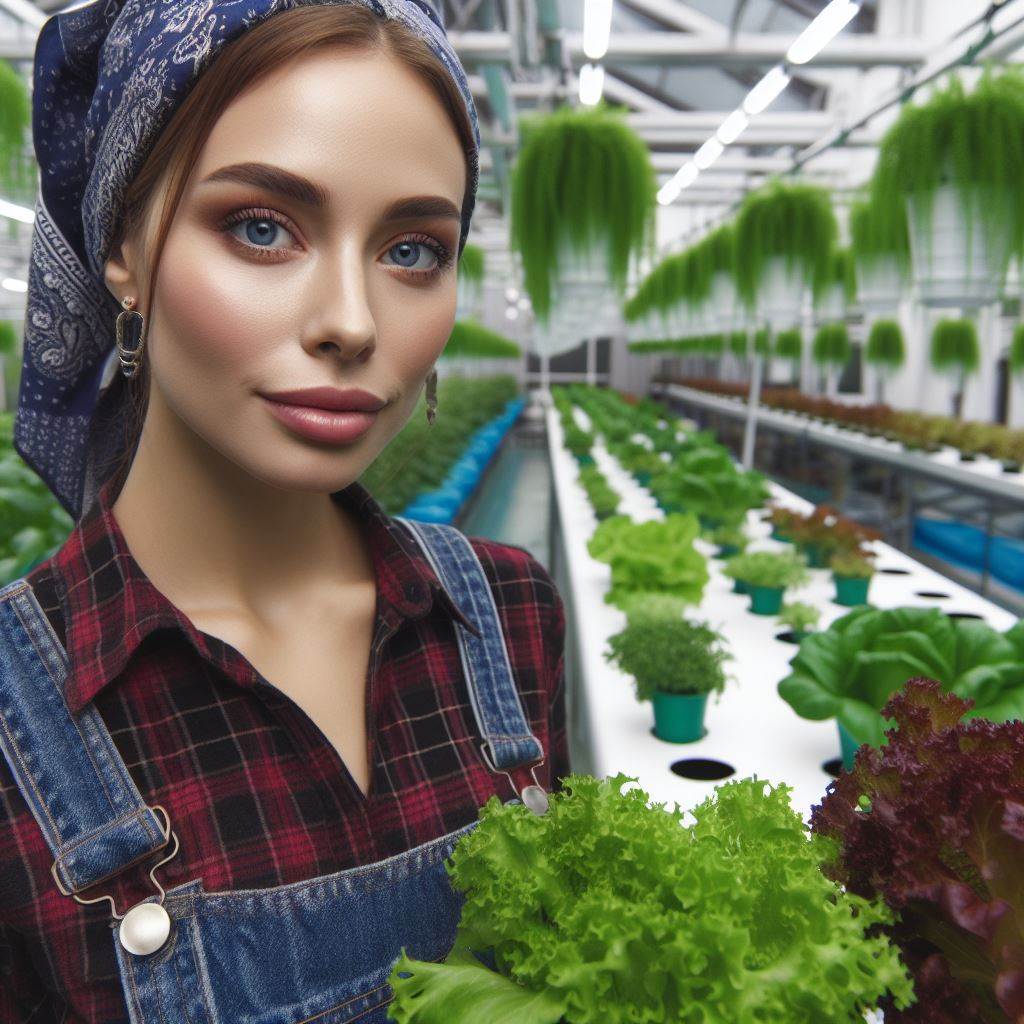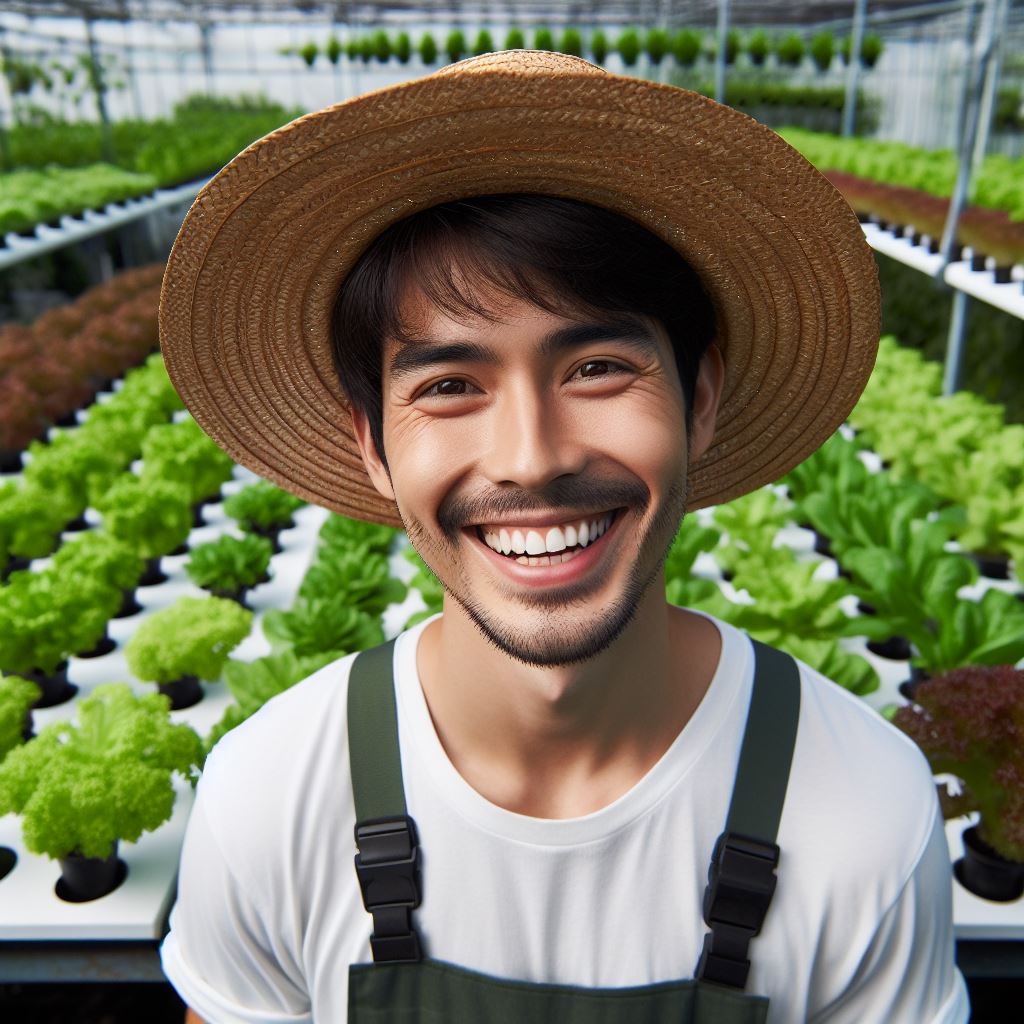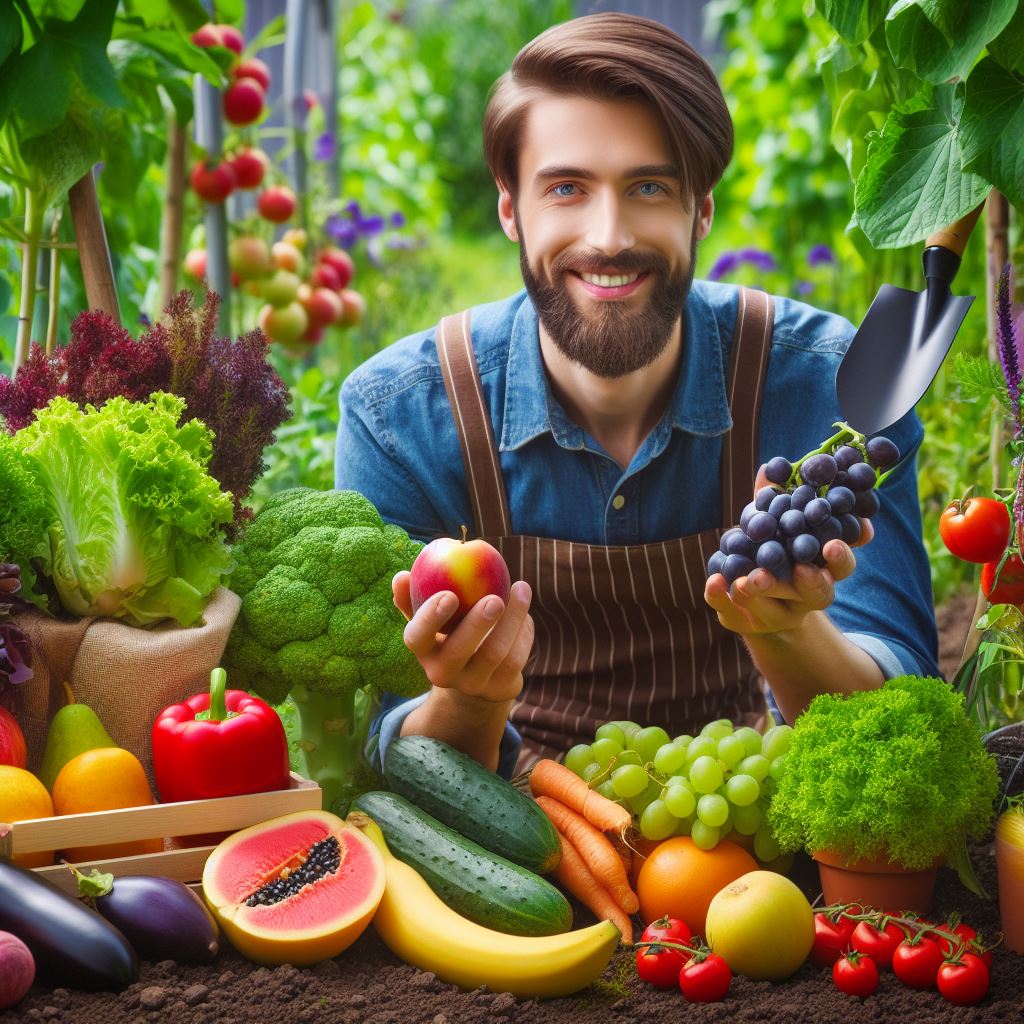Introduction
Delve into the world of innovative gardening with Hydroponics: Soil-Free Veggie Growing.
Discover the limitless potential of Hydroponics Soil Free Veggie Growing for sustainable and bountiful harvests.
Explanation of hydroponics
Hydroponics is a soil-less method of growing plants by providing nutrients directly to their roots.
This innovative technique has gained popularity in recent years due to its numerous advantages over traditional soil-based farming.
Soil-free veggie growing is important because it conserves water, maximizes space, and reduces pests and diseases.
Hydroponics allows plants to grow in a controlled environment, without the need for soil.
The plants are grown in a nutrient-rich solution that provides all the necessary nutrients for their growth.
This eliminates the need for soil preparation and reduces the risk of soil-based diseases.
Importance of soil-free veggie growing
Soil-free veggie growing is important because it conserves water, maximizes space, and reduces pests and diseases.
One of the main advantages of soil-free veggie growing is water conservation.
In traditional farming, a significant amount of water is lost through evaporation and runoff.
Hydroponics reduces water usage by recycling the nutrient solution and delivering it directly to the roots, minimizing water waste.
Another benefit of hydroponics is space efficiency.
This method allows plants to be grown vertically, maximizing the use of limited space.
Vertical farming systems can be set up in urban areas, enabling fresh produce to be grown in the heart of the city.
Transform Your Agribusiness
Unlock your farm's potential with expert advice tailored to your needs. Get actionable steps that drive real results.
Get StartedIn addition, soil-free veggie growing reduces the risk of pests and diseases.
Soil can harbor harmful pathogens that can damage crops.
By eliminating soil, hydroponics minimizes the chances of plants being affected by such diseases, resulting in healthier and higher-quality vegetables.
In essence, hydroponics and soil-free veggie growing offer numerous advantages over traditional farming methods.
By conserving water, maximizing space, and reducing pests and diseases, this innovative technique is revolutionizing the way we grow and obtain our vegetables.
What is hydroponics?
Definition and origin of hydroponics
Hydroponics is a method of growing plants without soil, using a nutrient-rich water solution.
The concept of hydroponics dates back to ancient civilizations such as the Babylonians and the Aztecs.
These civilizations used simple techniques like floating rafts to grow plants in water.
In the early 20th century, hydroponics gained more attention with the invention of nutrient solutions.
Principles and techniques used in hydroponics
Hydroponics relies on several key principles such as providing plants with the right nutrients, water, and oxygen.
Common techniques used in hydroponics include nutrient film technique, deep water culture, and aeroponics.
In the nutrient film technique, a thin film of nutrient solution constantly flows over plant roots.
Deep water culture involves suspending plant roots in a nutrient-rich water solution.
Aeroponics is a method where plants are grown in a misty environment with nutrients sprayed directly onto the roots.
Advantages of utilizing hydroponic systems
Hydroponic systems offer several advantages over traditional soil-based gardening.
- Higher yields: Hydroponic systems can produce higher yields compared to traditional soil-based methods.
- Water conservation: Hydroponics uses up to 90% less water than conventional soil-based gardening.
- No weeds: Since hydroponics doesn’t require soil, there is no need to deal with weeds.
- Space efficiency: Hydroponic systems allow for vertical gardening, maximizing space utilization.
- Faster growth: Plants in hydroponic systems grow faster due to the optimal nutrient levels provided.
- Pest control: Hydroponics eliminates soil-borne pests, reducing the need for chemical pesticides.
In general, hydroponics is a soil-free method that utilizes nutrient-rich water solutions to grow plants.
Originating from ancient civilizations, hydroponics has evolved into a modern technique with various principles and techniques.
The advantages of hydroponic systems, including higher yields and water conservation, make it an attractive option for veggie growing.
Read: Multipurpose Garden Tools for Efficiency
Benefits of soil-free veggie growing
Soil-free veggie growing, also known as hydroponics, offers a range of benefits that make it an attractive alternative to traditional soil-based agriculture.
By eliminating the need for soil, hydroponics can enhance crop yield and productivity, conserve water and nutrients, minimize pests and diseases, and be suitable for urban environments and limited spaces.
Increased crop yield and productivity
Hydroponics allows for precise control over the growing environment, resulting in increased crop yield.
By providing plants with the optimal conditions for growth, such as nutrient-rich water, adequate lighting, and proper pH levels, hydroponic systems can significantly boost productivity.
This means that farmers can harvest more vegetables in less time, maximizing their profits.
Showcase Your Farming Business
Publish your professional farming services profile on our blog for a one-time fee of $200 and reach a dedicated audience of farmers and agribusiness owners.
Publish Your ProfileConservation of water and nutrients
One of the main advantages of hydroponics is its efficient use of water.
Unlike traditional agriculture, which can lead to water wastage due to evaporation and inefficient irrigation methods, hydroponics uses a recirculating system that minimizes water loss.
Additionally, since nutrients are directly delivered to the plant roots, there is no risk of leaching, ensuring that the plants receive all the necessary nutrients without any waste.
Minimization of pests and diseases
By eliminating soil from the equation, hydroponics reduces the risk of pests and diseases.
Soil-borne pathogens, such as fungi and bacteria, are notoriously difficult to control in traditional farming methods.
With hydroponics, plants are grown in a clean and controlled environment, reducing the chances of infestations.
This not only saves farmers from the cost of pest control measures but also eliminates the need for harmful pesticides.
Suitable for urban environments and limited spaces
Hydroponics is particularly well-suited for urban environments and limited spaces where arable land may be scarce.
The compact nature of hydroponic systems allows for vertical farming, meaning that plants can be stacked in multiple layers, maximizing space utilization.
This makes it possible to grow a significant amount of food in small areas, enabling urban dwellers to have fresh, locally grown produce without relying on long-distance transportation.
In essence, the benefits of soil-free veggie growing, or hydroponics, are numerous.
By increasing crop yield and productivity, conserving water and nutrients, minimizing pests and diseases, and being suitable for urban environments and limited spaces, hydroponics represents a sustainable and efficient method of growing vegetables.
As the world grapples with issues of food security and environmental sustainability, hydroponics offers a promising solution for future agriculture.
Types of hydroponic systems
When it comes to hydroponics, there are various types of systems that can be used to grow vegetables without soil.
Each of these systems has its own advantages and suitability for different types of plants and environments.
In this section, we will explore the different types of hydroponic systems and how they work.
When choosing a hydroponic system, it is important to consider factors such as the type of plants you want to grow, available space, budget, and level of technical expertise.
Each system has its own pros and cons, and what works for one gardener may not work for another.
It is also worth noting that some hydroponic systems can be combined or modified to suit specific needs.
Nutrient Film Technique (NFT)
The Nutrient Film Technique is a hydroponic system where a thin film of nutrient-rich water flows over the roots of the plants.
The first type of hydroponic system is called Nutrient Film Technique (NFT).
In this system, plants are placed in channels or troughs, and a thin film of nutrient-rich water continuously flows over the roots.
This method allows for constant access to nutrients and oxygen.
Deep Water Culture (DWC)
In Deep Water Culture hydroponic system, plants are suspended in a nutrient-rich solution with their roots submerged.
Another popular hydroponic system is Deep Water Culture (DWC).
In this system, plants are suspended in a nutrient-rich solution with their roots submerged.
Oxygen is provided through the use of air stones or diffusers. This method is particularly effective for growing leafy greens and herbs.
Drip System
The Drip System hydroponic system involves using a timer to deliver nutrient-rich water to the base of each plant.
The Drip System is another commonly used hydroponic system.
It involves using a timer and pump to deliver nutrient-rich water to the base of each plant through small tubes or drippers.
This controlled delivery ensures that plants receive the right amount of nutrients and water.
Wick System
The Wick System is a simple hydroponic system where a wick transports nutrient-rich water to the plant’s roots.
For those looking for a simpler hydroponic system, the Wick System is a good option.
In this system, a wick, made of absorbent material, transports the nutrient-rich water from a reservoir to the plant’s roots.
This method is suitable for small-scale gardening and is easy to set up and maintain.
Aeroponics
Aeroponics is a high-tech hydroponic system where plants are grown in a mist or air environment.
Lastly, there is the advanced Aeroponics system.
In Aeroponics, plants are grown in a mist or air environment, with their roots suspended in the air.
Nutrients are delivered through a fine mist, providing optimal oxygenation and nutrient absorption.
This high-tech system allows for faster growth and higher yields, but it requires precise monitoring and control.
Showcase Your Farming Business
Publish your professional farming services profile on our blog for a one-time fee of $200 and reach a dedicated audience of farmers and agribusiness owners.
Publish Your ProfileIn essence, hydroponics offers a variety of systems to grow vegetables without soil.
The Nutrient Film Technique, Deep Water Culture, Drip System, Wick System, and Aeroponics are some of the most commonly used methods.
Whether you are a beginner or an experienced gardener, there is a hydroponic system that can help you grow healthy and nourishing vegetables all year round.
Read: Urban Gardening: Maximize Your Small Space
Setting up a hydroponic system
A hydroponic system allows for soil-free vegetable growing, making it an efficient and sustainable method for cultivating plants.
Setting up this system involves several important steps, such as selecting appropriate plants, choosing the right hydroponic system, acquiring necessary equipment and materials, preparing the nutrient solution, and creating an ideal growing environment.
Selection of appropriate plants for hydroponics
When choosing plants for hydroponics, it is essential to consider their adaptability to soil-free environments.
Some popular choices include lettuce, herbs, tomatoes, cucumbers, and peppers.
These plants have been successfully grown using hydroponic techniques.
Factors such as growth rate, size, water and nutrient requirements, and ability to withstand water-based systems should be considered.
It is also important to select disease-resistant varieties to minimize the risk of crop failure.
Choosing the right hydroponic system
There are several types of hydroponic systems available, each with its own advantages and disadvantages.
The choice of system depends on various factors, such as available space, budget, and personal preference.
The most common systems include the Nutrient Film Technique (NFT), Deep Water Culture (DWC), Ebb and Flow (Flood and Drain), Drip System, and Aeroponics.
Researching and understanding the different systems will help determine which one suits your needs best.
Acquiring necessary equipment and materials
Setting up a hydroponic system requires specific equipment and materials.
These include containers (such as plastic buckets or trays), growing medium (like perlite, vermiculite, or Rockwool cubes), pumps, reservoirs, pH meters, meters for measuring nutrient levels, and a timer.
You will also need a light source (such as artificial grow lights), air pumps or fans for ventilation, and a water source.
It is essential to ensure all equipment and materials are of high quality and suitable for hydroponic cultivation.
Preparation of nutrient solution
The nutrient solution is a crucial component of hydroponics as it provides plants with the necessary nutrients for their growth and development.
This solution typically consists of water and a balanced mix of essential elements such as nitrogen, phosphorus, potassium, calcium, magnesium, and trace minerals.
It is important to follow precise instructions when preparing the nutrient solution and monitor its pH and EC (electrical conductivity) levels regularly.
Adjustments may be required to maintain optimal nutrient absorption by the plants.
Creating an ideal growing environment
To achieve successful growth in a hydroponic system, it is necessary to create an ideal growing environment.
This includes providing the right temperature, humidity, and ventilation.
The temperature can be controlled using heaters or fans, depending on the requirements of the plants being grown.
Humidity can be regulated using humidifiers or dehumidifiers, ensuring it remains within the optimal range for plant growth.
Ventilation is crucial for replenishing carbon dioxide, controlling temperature, and preventing the buildup of pathogens.
Proper air circulation can be achieved through the use of fans or vents in the hydroponic setup.
Essentially, setting up a hydroponic system involves carefully selecting appropriate plants, choosing the right system, acquiring necessary equipment and materials, preparing the nutrient solution, and creating an ideal growing environment.
Each step plays a vital role in the success of the hydroponic venture, ensuring healthy, soil-free vegetable cultivation.
Read: Pruning 101: Tips for Healthier Plants

Maintenance and care of hydroponic systems
A hydroponic system requires regular maintenance and care to ensure optimal growth and productivity of plants.
Here are some important aspects to consider:
Monitoring and adjusting nutrient levels
Regularly monitor the nutrient solution in your hydroponic system to maintain proper nutrient levels.
- Check the pH level using a pH meter and adjust it if necessary to keep it within the ideal range (typically around 5.5 to 6.5).
- Monitor the electrical conductivity (EC) of the solution with a conductivity meter to ensure the right nutrient concentration.
- Adjust nutrient levels by adding the appropriate fertilizer or adjusting ratios of existing nutrients to meet plant requirements.
Pest control in hydroponics
Since hydroponic systems provide a controlled environment, pests can be effectively managed without the use of harmful chemicals.
- Implement preventive measures like maintaining proper hygiene, including regularly cleaning plant debris.
- Introduce beneficial insects such as ladybugs or predatory mites to control pest populations.
- Use sticky traps to catch flying insects and regularly inspect your plants for any signs of infestation.
- If necessary, use organic pest control methods such as neem oil or insecticidal soap to address specific pest issues.
Cleaning and sterilization of equipment
To prevent the growth of harmful pathogens and maintain a healthy hydroponic system, regular cleaning and sterilization are crucial.
- Drain and clean the system regularly, removing any plant debris or root residues.
- Use a disinfectant solution or hydrogen peroxide to sterilize the equipment, including containers, pumps, and tubing.
- Rinse all cleaned equipment thoroughly to remove any traces of sterilization agents before reassembling the system.
pH and temperature regulation
Maintaining the correct pH and temperature levels is vital for the overall health and productivity of your hydroponic plants.
- Regularly check and adjust the pH level to ensure nutrient absorption is optimized.
- Use pH up or down solutions to make necessary adjustments and keep a log of pH measurements.
- Monitor and regulate the temperature of the nutrient solution by using a water chiller or heater.
- Keep the temperature within the optimal range for your specific plants, usually between 65°F and 75°F (18°C and 24°C).
System maintenance and troubleshooting tips
To keep your hydroponic system running smoothly, regular maintenance and troubleshooting are essential.
- Inspect plants regularly for any signs of nutrient deficiencies, diseases, or stress and take necessary actions.
- Check the functioning of pumps, timers, and air stones to ensure they are working properly.
- Regularly clean or replace filters to maintain a clean and efficient system.
- Keep spare parts and replacement materials handy in case of any unexpected breakdowns or failures.
By monitoring nutrient levels, practicing pest control, cleaning equipment, regulating pH and temperature, and performing regular maintenance, you can ensure a successful and thriving hydroponic system.
Showcase Your Farming Business
Publish your professional farming services profile on our blog for a one-time fee of $200 and reach a dedicated audience of farmers and agribusiness owners.
Publish Your ProfileThese efforts will ultimately lead to healthy and productive plants for your soil-free veggie growing adventures!
Successful examples of hydroponics
Hydroponic farms around the world:
- In Canada, Lufa Farms has created rooftop greenhouses that use hydroponic systems to grow fresh produce.
- In the Netherlands, GreenSense built the largest hydroponic lettuce farm in Europe, producing over one million heads of lettuce each year.
- The Rooftop Republic in Hong Kong utilizes hydroponics to grow vegetables on unused rooftops, reducing the city’s carbon footprint.
- In the United States, Gotham Greens operates hydroponic greenhouses in New York City, providing local communities with year-round fresh produce.
- Vertical Harvest in Wyoming grows hydroponic greens and provides employment opportunities for individuals with disabilities.
Urban gardening initiatives using hydroponics
- The Babylon Micro-Farm is an all-in-one hydroponic system designed for urban dwellers to grow their own vegetables.
- Plantagon in Sweden developed the “Plantagon Vertical Greenhouse” to enable urban farming in limited spaces using hydroponics.
- CityFarm Malaysia uses hydroponic technology to grow vegetables in urban areas with limited access to traditional farming spaces.
- In Tokyo, Pasona O2 developed an underground hydroponic farm inside a high-rise building, showcasing innovative urban agriculture.
- The Plant in Chicago hosts an aquaponic system, combining hydroponics and fish farming to create a sustainable urban ecosystem.
Community gardens and hydroponics
- The ECO City Farms in Maryland incorporates hydroponics in their community gardens, engaging residents in sustainable food production.
- The Sky Vegetables project in Boston installs modular hydroponic gardens on rooftops, providing fresh produce for local communities.
- Hydro Harvest Farms in Florida offers hydroponic gardening workshops to educate and empower community members to grow their own food.
- The Green Bronx Machine in New York City implements hydroponic systems in schools to teach children about sustainable agriculture.
- Grow Pittsburgh in Pennsylvania uses hydroponics in their community garden programs, promoting food security and urban greening.
These successful examples of hydroponics showcase the diverse applications of this soil-free vegetable growing method.
From large-scale farms to urban gardening initiatives and community gardens, hydroponics proves to be an innovative solution for sustainable and accessible food production.
Potential challenges and limitations of hydroponics
Hydroponics, the practice of growing plants without soil, offers numerous benefits such as increased yield, water conservation, and reduced use of pesticides.
However, it also comes with its fair share of challenges and limitations.
In this section, we will discuss some of the potential obstacles that hydroponic growers may encounter.
Initial setup costs
- Hydroponic systems require an initial investment in equipment such as grow lights, nutrient solutions, and pumps.
- The cost of setting up a hydroponic system can be significantly higher compared to traditional soil-based methods.
- Growers need to consider the expenses of building or purchasing specialized structures and components.
Technical knowledge and expertise required
- Successful hydroponic gardening requires a deep understanding of plant physiology and environmental factors.
- Growers need to have knowledge about nutrient management, pH balancing, and water quality maintenance.
- Regular monitoring and adjustment of nutrient levels and water temperature are essential for optimal plant growth.
Risk of system malfunctions and failures
- Hydroponic systems rely on pumps, timers, and other mechanical devices that can malfunction or break down.
- A single failure in the system can lead to dramatic consequences such as water deprivation for the plants.
- Growers need to be knowledgeable about system troubleshooting and have backup measures in place.
Dependence on electricity supply
- Most hydroponic systems require a constant supply of electricity to power lights, pumps, and other equipment.
- Power outages or fluctuations can disrupt the functioning of the system and negatively impact plant growth.
- Growers must have backup power sources or alternative plans in case of electricity disruptions.
Despite these challenges and limitations, hydroponics remains a promising method for sustainable vegetable production.
By being aware of these potential obstacles and investing time and effort into overcoming them, hydroponic growers can maximize their chances of success in this innovative farming approach.
Read: Budget-Friendly Tools for New Gardeners
Delve into the Subject: Grow Your Own Herbs: A Seasonal Guide
Conclusion
Recap of the benefits and advantages of hydroponics
In closing, hydroponics offers numerous benefits and advantages in veggie growing.
The recap of these benefits includes water conservation, increased crop yield, and faster growth.
Encouragement to explore soil-free veggie growing
We encourage everyone to explore soil-free veggie growing through hydroponics as it allows for year-round gardening and requires minimal space.
The potential of hydroponics for sustainable agriculture
Furthermore, hydroponics has the potential to revolutionize sustainable agriculture by reducing the need for pesticides and herbicides, and by eliminating soil erosion and contamination.
By adopting hydroponics, we can ensure a future of efficient, sustainable, and healthy food production.




